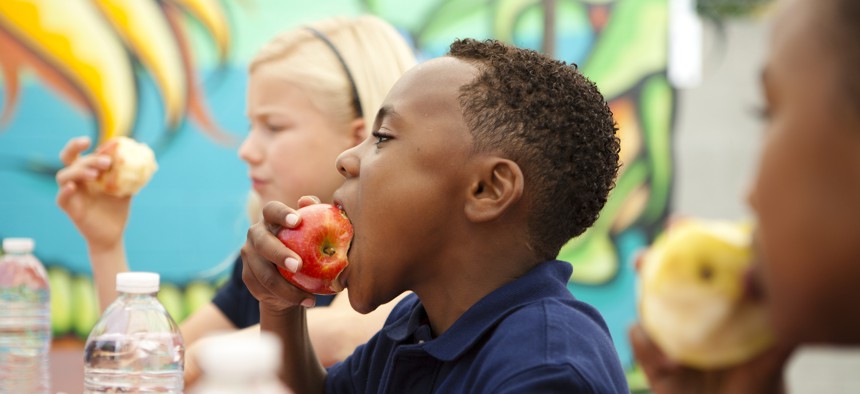Data Show Rise in Households Struggling to Afford Food For Kids

iStock.com/MichaelDeLeon
But the new federal statistics also reveal food insecurity among children in 2020 didn't reach levels seen during the last recession.
There were about 2.9 million American households with children that lacked access to adequate food at some point during 2020, as the pandemic set in and battered the economy, according to new estimates from the U.S. Department of Agriculture.
The USDA Economic Research Service figures show children were what's described as "food insecure" at times last year in 7.6% of households with kids. That's up from 6.5%, or around 2.4 million households in 2019. Even with that uptick, the 2020 figure is lower than it was during and after the Great Recession of 2007-08.
Food insecure households are those that struggle to provide enough nutritious food for all of their members at least some of the time because they're short on cash or other resources. The report explains that most families in this category avoid major gaps in meals, but might rely on a few basic foods and less variety in their diets to get by. A subgroup known as having "very low" food security is worse off.
USDA's estimates show there were about 322,000 households—up from 213,000 in 2019—with kids in the very low group. These families reported difficulties like kids skipping meals, going hungry, or not eating for a whole day due to financial reasons.
Overall, the share of U.S. households experiencing food insecurity held steady in 2020, compared to 2019, at around 10.5%, or 13.8 million. Levels of food insecurity were higher than the national average last year in nine states: Alabama, Kentucky, Louisiana, Mississippi, New Mexico, Oklahoma, Tennessee, Texas and West Virginia.
The rise in food insecurity for households with kids came as the nation's economic health took a major hit from Covid-19 and despite the federal government pouring billions of dollars towards expanded programs intended to prevent people from going hungry.
In 2008, around when the last recession struck, the share of households with food insecure kids among households with children was 11%—or about 4.3 million households, the USDA report shows. Between 2009 and 2018, the figure was between 7% and 10.6%.
Certain households were more likely to experience food insecurity last year than others, according to the estimates. For instance, those with children headed by a single woman (27.7%) or a single man (16.3%) and households where a Black (21.7%) or Hispanic (17.2%) person is recorded as the home's renter or owner.
Last month, the Biden administration announced changes that will raise benefits flowing through the nation's largest food assistance program by upwards of 25% compared to pre-pandemic levels.
A full copy of the USDA report can be found here.
Bill Lucia is a senior editor for Route Fifty and is based in Olympia, Washington.






